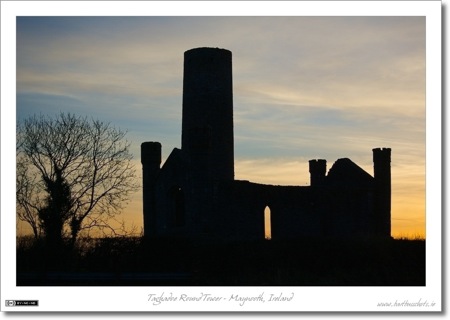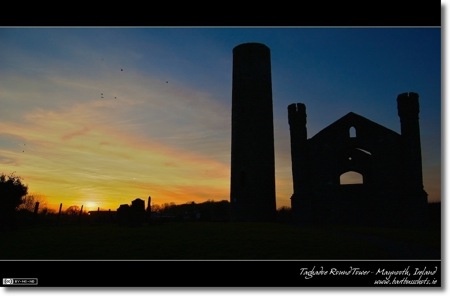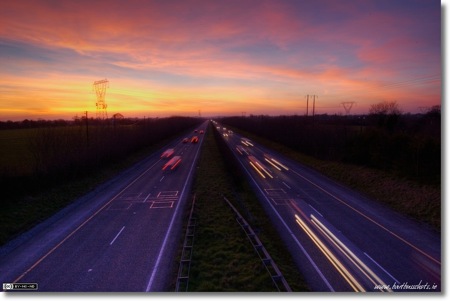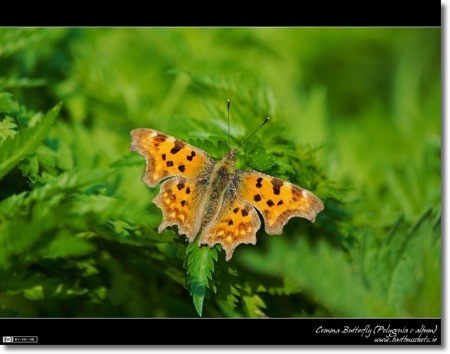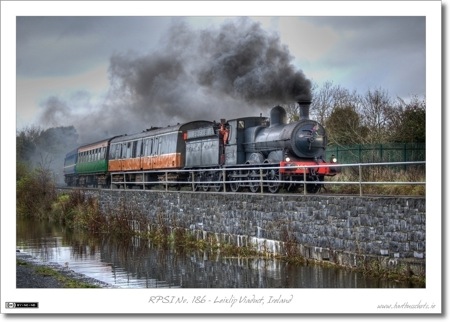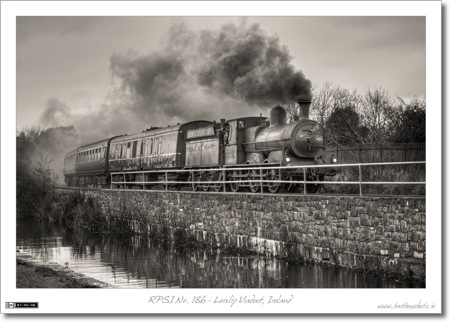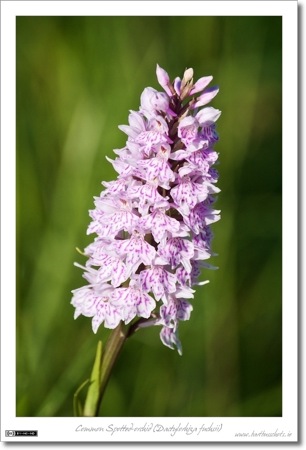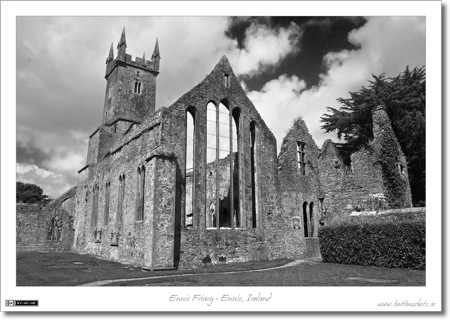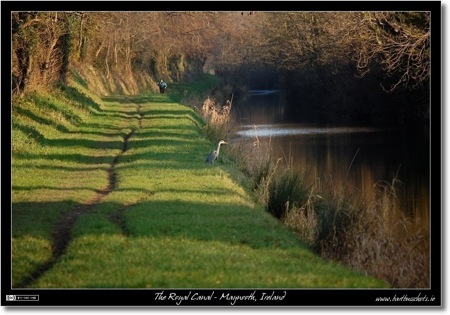Dec
26
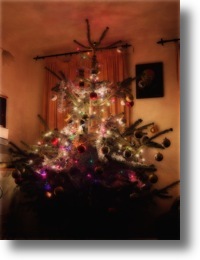 The Orton Effect is an old effect that dates back to the film days and involved combining an in focus and an out of focus version of the same shot into a single image to give a dreamy effect where the shot is blurred yet has all it’s detail. You can read (a little) more about it on Wikipedia.
The Orton Effect is an old effect that dates back to the film days and involved combining an in focus and an out of focus version of the same shot into a single image to give a dreamy effect where the shot is blurred yet has all it’s detail. You can read (a little) more about it on Wikipedia.
The reason I’m writing this tutorial now is that Christmas trees with their lights on make great subjects for the Orton Effect. It’s very hard to get a nice photo of the Christmas tree that does justice to the atmosphere of the scene, but the dreamy quality of an Orton image can really help.
Dec
13
With being sick and then just getting behind on everything, I’ve managed to miss two weekends so this is a catch-up instalment with three related shots. When ever I get behind and have to do multiple shots within one post I always try to pick photos that are in some way related to each other. In this case the link is that they were all taken during the single most beautiful sunset I have ever seen, on St. Patrick’s Day this year. The first two are both silhouettes of the beautiful ruins of Taghadoe church and round tower on the outskirts of Maynooth, and the thirds is a long exposure shot of cars driving off into the sunset on the M4 motorway just outside Maynooth.
The last shot was tonemapped to recover detail in the sky, but the other two are mostly as they came out of the camera with just a few tweaks in Aperture. As beautiful as these shots are, the real sunset was even more beautiful and inspiring. Just one evening like that a year is enough to make up for all the times I’ve been rained out in Ireland.
- Camera: Nikon D40
- Lens: Nikon DX AFS 18-55mm (D40 kit lens)
- Exposure: 1/640 sec
- Focal Length: 46mm
- Focal Ratio: f/5.3
- ISO: 200
- Camera Mode: Aperture Priority
- Exposure Bias: -1.0ev
- Camera: Nikon D40
- Lens: Nikon DX AFS 18-55mm (D40 kit lens)
- Exposure: 1/1600 sec
- Focal Length: 18mm
- Focal Ratio: f/5
- ISO: 200
- Camera Mode: Aperture Priority
- Exposure Bias: -2.0ev
- Camera: Nikon D40
- Lens: Nikon DX AFS 18-55mm (D40 kit lens)
- Exposure: 1/2 sec
- Focal Length: 18mm
- Focal Ratio: f/22
- ISO: 200
- Camera Mode: Manual Mode
Nov
24
Before I explain my thinking on all this, I want to set the scene. I do work in the public sector, but I’m not a civil servant. I work in a university. I am on strike today, but I’m not out on the picket line. I voted against strike action, but I believe in democracy, so I’m respecting the strike, though not actively supporting it. It is true that people at the top of the public sector earn very high wages, but that is not true of people all the way down. To be honest, it’s just like the private sector. The plebs at the bottom struggling to pay their bills, and the fat-cats at the top compensating themselves generously. It’s also true that I get a good pension, but, it’s not a free pension. I pay for it each month, and on top of actually paying for my pension, I have to pay the pension levy too.
Nov
23
Photo of the Week 92 – A Cabbage Leaf
Filed Under Photography | Leave a Comment
When you find yourself getting bored of shooting in the sample place, a great way to get out of a rut is to force yourself to use just one lens all day. This forced perspective gives you no choice but to think differently about the location. This is what I did one changeable afternoon this summer. I stuck on my 55-200mm telephoto, and forced myself to use nothing else for the day. Being out in the beautiful Cavan countryside I would normally be shooting wide angle landscape shots. But, being confined to the telephoto I had to think smaller. That was when I noticed the water drops from a recent shower pooling on a cabbage leaf, and grabbed this shot.
I use this shot as one of the 20 or so that I have automatically rotating every 30 minutes as my desktop wallpaper. Each time it comes round in the rotation it brings a smile to my face. Normally I don’t share images bigger than 1000 pixels, but in this case I’m also sharing two larger versions designed to be used as desktop wallpapers.
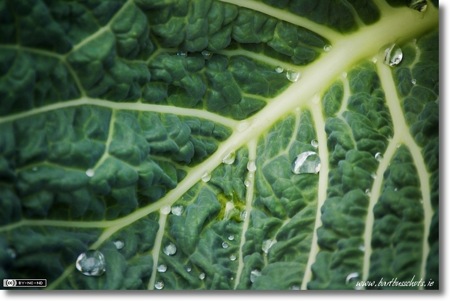
on Flickr – Full-Size – Wallpaper (4:3) – Wallpaper (16:10)
- Camera: Nikon D40
- Lens: Nikon DX AFS 55-200mm
- Exposure: 1/500 sec
- Focal Length: 200mm
- Focal Ratio: f/5.6
- ISO: 800
- Camera Mode: Aperture Priority
- Processing: Apart from the basics edits in Aperture (exposure, white balance, detail & vibrancy), the shot was also tweaked a little using Aperture’s Dodge & Burn plugin to give it more of a sense of depth to draw the eye in better.
Nov
22
My Google Earth Railway History Project
Filed Under Computers & Tech, History & Geography | 13 Comments
This is not a finished project. Not even nearly. But I think it’s about time I shared what I have, and now is the perfect time since it’s the topic for this week’s Chit Chat Across The Pond segment on the Nosilla Cast.
Nov
15
Photo of the Week 91 – Comma Butterfly
Filed Under Photography | 1 Comment
This is a shot I took back in April of this year while I was on holidays in Belgium. Common wisdom is that centred subjects are a bad thing in photography, and that they lead to boring photos. Because of that I spent a lot of time trying different crops on this image to come up with a shot where the composition is not centred, but in the end, I didn’t like any of the crops and decided to just ignore common wisdom for this shot. I like how the orange butterfly is surrounded by a see of green, and I think the diagonal orientation of the butterfly makes the composition work despite being centred.
The Comma Butterfly (Polygonia c-album) is exceptionally rare in Ireland. I does show up here from time to time in the very extreme south east in Wexford, but those are individuals who migrate over from the the UK if the summer is very good. In Belgium however, these wonderful butterflies are quite common.
- Camera: Nikon D40
- Lens: Nikon DX AFS 55-200mm
- Exposure: 1/500 sec
- Focal Length: 200mm
- Focal Ratio: f/8
- ISO: 400
- Camera Mode: Aperture Priority
- Processing: the exposure, saturation & contrast were selectively tweaked in the butterfly using Aperture’s Dodge & Burn plugin
Nov
8
Since I was ill last weekend I’m doing a double-post this weekend. In this case, it’s actually the same shot post-processed in two different ways.
Both shots are of the steam locomotive No. 186 which started it’s life as a mainline locomotive for Ireland’s Great Southern & Western Railway (GS&WR or just GSWR). No. 186 is now lovingly maintained by the Railway Preservation Society of Ireland (RPSI), and gets to stretch it’s legs on various Irish Rail mainlines on steam specials. This shot was taken when No. 186 was pulling the Ghost Train steam special from Dublin Connolly to Mullingar and back to Dublin Connolly. Here we see No. 186 crossing the Leixlip Viaduct on her way out to Mullingar in the morning. You can read more about No. 186 on the RPSI’s Website.
Normally when I tone-map shots I like to keep them looking natural, but in this case I really liked the result of pushing things a little further. The result is still quite natural, but yet also somewhat hyper-real.
The second version uses the first as the base for the conversion to monochrome. Because black and white shots tend to pick up a lot of texture anyway, the hyper-real look of the first version is completely lost in the second. We’re used to Sepia tone shots having this level of texture and detail in them.
You can see all my photos from this steam special in this Flickr Set.
- Camera: Nikon D40
- Lens: Nikon DX AFS 55-200mm
- Exposure: 1/320 sec
- Focal Length: 55mm
- Focal Ratio: f/4.5
- ISO: 400
- Camera Mode: Aperture Priority
- Processing (Version 1): Started by tonemapping a single RAW image in Photomatix Pro, then selectively tweaked the exposure, contrast, and saturation using the Dodge & Burn plugin in Aperture.
- Processing (Version 2): Took the veresion described above as the starting point, then converted to monochrome using the Channel Mixer brick in Apeture, then added a subtle Sepia Tone using the Colour Monochrome brick.
Oct
26
A few weeks ago I chose my favourite butterfly shot of the year, this week I’m choosing my favourite wild flower shot of the year. This was a really hard choice because I really got to grips with my Nikkor 55-200mm zoom lens this year, so there were a lot of decent flower shots to choose from. However, in the end, this shot won, in no small part because of how pretty a flower it is! I just love wild Orchids, and always have. When you stumble across one you feel like you’ve found a little treasure! In this case the Orchid is a Common Spotted-orchid (Dactylorhiza fuchsii). I’m not sure the name really suits the flower, ‘common’ implies abundant to me, and that doesn’t seem to tally with reality.
I managed to find a marshy field with quite a few of these beauties near Leixlip Louisa Bridge train station, and after much searching I found one that was blemish-free and standing out on its own enough to get a nice soft un-cluttered bokeh. The light was also pretty much perfect as I shot it in the early evening.
What I really love about this shot is that I had almost noting to do in post – it came out of the camera almost exactly like this! I Just did a few very minor tweaks in Aperture to get the crop just as I wanted it, and to pop the colour and the contrast just a little bit.
- Camera: Nikon D40
- Lens: Nikon DX AFS 55-200mm
- Exposure: 1/640 sec
- Focal Length: 200mm
- Focal Ratio: f/11
- ISO: 400
- Camera Mode: Aperture Priority
- Exposure Bias: -0.3ev
Oct
18
Photo of the Week 87 – Ennis Friary
Filed Under Photography | 1 Comment
I don’t do many black & white conversions, but for some reason Ennis Friary seemed to lend itself to them very well. I guess old church buildings just work in monochrome! This week’s Photo of the Week is one from a set taken on the 1st of August this year when I was in Ennis for a friend’s wedding.
Wide angle lenses cause distortion which makes parallel lines not look parallel, this generally takes away from images of buildings. However, in this image the distortion actually adds to the shot because of the angle of the camera relative to the building. We’re not looking at the building face-on, but instead corner-on. The building is still distorted, but rather than being off-putting the distortion works to make the building look more imposing.
The easiest way to make a colour image black & white is to simply desaturate it. This almost never gives a nice image. The output tends to be bland, flat, and boring. If you want to get a better conversion you need to use a channel mixer. This allows you to control the levels of each colour that are used to create the final monochrome image. You can spend hours tweaking with the mixer, but when it works, it can give very striking images. In this case I used the mixer to take out the blue channel entirely, this turned the blue sky the dramatic black colour you see here. I also turned the green channel down a bit to darken the grass a little. Finally, the red channel was boosted to make up for the reduction in light from reducing both the blue and green channels. This had the effect of brightening the building relative to the grass and sky so it stands out.
- Camera: Nikon D40
- Lens: Nikon DX AFS 18-55mm (D40 kit lens)
- Exposure: 1/1250 sec
- Focal Length: 18mm
- Focal Ratio: f/8
- ISO: 400
- Camera Mode: Aperture Priority
- Exposure Bias: -0.3ev
- Processing: The image was converted to monochrome using the Channel Mixer, and then the contrast in the building was selectively increased using the Dodge & burn plugin in Aperture.
Oct
14
Photo of the Week 86 – The Royal Canal
Filed Under Photography | 2 Comments
A lot my macro shots that make it into this series are shot along the Royal Canal, so this week I thought I’d share a picture of the canal itself! For me it’s a little oasis of accessible nature. I love spending time along towpath with my camera. You meet fellow nature lovers as well as fitness types, and obviously plenty of flora and fauna too.
I love this shot because is captures that combination of nature as well as people enjoying nature. I also love the sense of depth in this shot. I took this shot ages ago, but was reluctant to use it for Photo of the Week because it really only works when you view it large – and I prefer to choose shots that work well even at small sizes. Still – I really like this shot so I decided to share it regardless.
- Camera: Nikon D40
- Lens: Nikon DX AFS 55-200mm
- Exposure: 1/320 sec
- Focal Length: 200mm
- Focal Ratio: f/5.6
- ISO: 400
- Camera Mode: Aperture Priority
- Exposure Bias: -0.7ev







